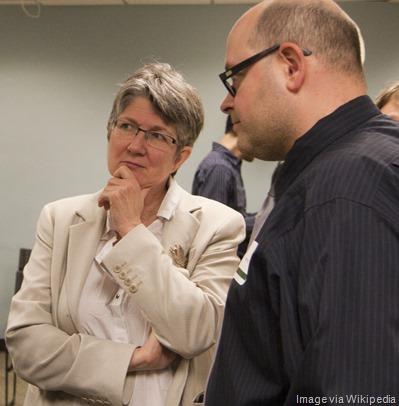 As a business advisor, I certainly recognize the need for talking to make an investment case, close a sale, or communicate with your team. I also recognize the need for active listening. The challenge is to know when it’s time to switch from one to the other. You can’t learn anything new while you’re talking, yet many business professionals and entrepreneurs seem to never stop.
As a business advisor, I certainly recognize the need for talking to make an investment case, close a sale, or communicate with your team. I also recognize the need for active listening. The challenge is to know when it’s time to switch from one to the other. You can’t learn anything new while you’re talking, yet many business professionals and entrepreneurs seem to never stop.
It’s a sad spiral, since the longer you talk to someone without stopping to listen, the less both of you really hear, meaning they don’t learn anything and you weren’t listening, so you have to spend even more time talking to get the message across. Here are some guidelines for the most productive interchanges with business associates, investors, and customers:
-
Limit your statements and answers to sixty seconds or less. Long business responses are usually read as attempts to dominate the conversation, or cover basic weaknesses in your argument. Shorter verbal exchanges help the conversation to flow smoothly, and lead to win-win relationships, rather than debates with a winner and loser.
-
Listen attentively to responses, and do not interrupt. Practice active listening to the speaker, instead of looking the other way, or formulating a defensive rebuttal. People who maintain eye contact while listening are more like to gain the speaker’s trust, and may actually learn something from the response, leading to effective results.
-
Lead your response with a thoughtful pause. This pause will convince the speaker that you have heard and processed their input, and gives them an additional incentive to actively listen in turn to your response. The result is greater awareness and impact on both sides, resulting in real learning and the most productive business exchange.
-
Don’t hesitate to ask questions for clarification. Asking a follow-on question demonstrates that you are really listening and care about the speaker’s view. Questions also are effective in narrowing the focus of the discussion, and more quickly resolving the issue or completing the communication. Asking good questions improves productivity.
-
Use part of your talking time to summarize what you have heard. This always improves your credibility as a speaker, since it convinces people you are also a listener, and confirms your progress in understanding the message. The result will be a better use of your time and theirs, and a more effective learning process on both sides.
-
When speaking to an individual, address them by name if possible. This gets their attention and focus, and builds trust and respect for you as an authoritative speaker. The next step is to use personal analogies and familiar terminology to get even higher attention, comprehension, and impact. This will help you get more done in less time.
-
Choose the right environment and mode of communication. The concept of talking too much is equally applicable to non-verbal discussions, including texting and email. No business person likes long and rambling electronic messages, and in many cases these are ineffective, as they lack body language and the ability to adapt to mood.
-
Practice the connect, convey, and convince strategy. Every speaker’s challenge is to get people’s attention quickly, succinctly convey the desired message, and move the listener to action. Talking more only confuses the issues, causes people to disconnect, and invites a defensive reaction. Listen for key points, and think before responding.
In business, if you find yourself talking more than listening, it may be time to tune your skills in both. Responsible, effective communication will give you a sustainable competitive advantage over both your peers and your competitors, by allowing you to get more done in less time. Time is a critical resource in these rapidly changing times. Don’t waste it repeating your message ad nauseam.

